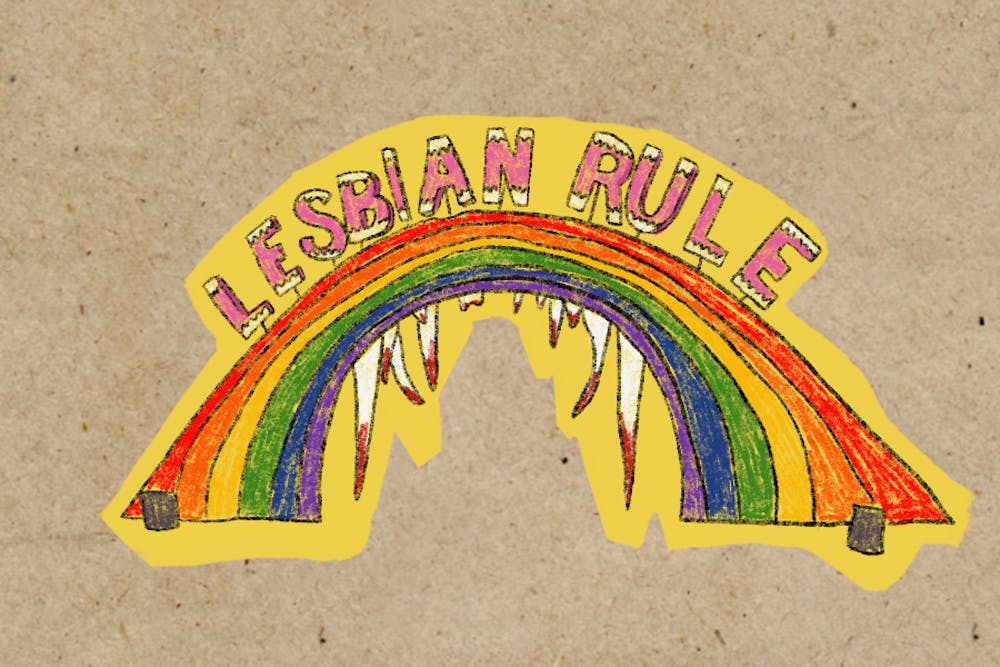When you entered Killjoy’s Kastle, you walked through a giant rainbow arch, with pink and white letters spelling out “LESBIAN RULE” emblazoned above it. This is actually one of the more understated parts of the exhibit–meets–haunted–house. Inside, you’ll find an insane women’s studies professor, sex–positive and polyamorous vampire grandmothers, and more. Killjoy’s Kastle was marketed with the tagline “A Lesbian Feminist Haunted House,” and consisted of a performance and visual art installation on display at the Icebox Project Space from Oct. 16 to Oct. 27. Given its recent attention, the exhibit might open elsewhere in the near future.
The exhibit itself is made up of a variety of sculptural objects and environments, along with a series of artists who play “monsters” throughout it. But while the “Haunted House” tagline may imply that this place is meant to solely scare you, Killjoy’s Kastle doesn’t do that. It’s an LGBTQ–inclusive educational space, meant to give historical and political context to various issues. And, it’s not even really a haunted house—it’s a hell house.
Hell houses—an Evangelical Protestant tradition that mixes the fright of a secular haunted house with the religious beliefs of the house owner—are yearly fixtures in some churches across the United States. They often focus on real–life situations and the supposed consequences of sinful actions, with a fundamentalist Christian outlook.
With this in mind, Killjoy’s Kastle has greater metaphorical weight—it’s not just a twist on a haunted house, but a reclamation. It takes spaces built to cast LGBTQ individuals as sinners and reconstructs them as explicitly welcoming, safe, and fun.
Killjoy’s Kastle opened in 2015 at the University of Southern California and only recently moved to the Icebox Project Space to open a second time. The first opening offered queer and feminist critique through sections like the “straw feminist gallery” and the graveyard of dead lesbian feminist ideas, movements, and publications. It featured a “riot ghoul” and a gender studies professor dance party. This latest exhibition in Philadelphia also featured components—both sculptural and thematic—created by local Philadelphia artists. This allowed Deirdre Logue and Allyson Mitchell, the creators of the exhibition, to redisplay their work in a way that emphasized and responded to the political landscape of the local community.
In the exhibit itself, your guide—either a deranged women’s studies professor or her TA—explains the complications and politics behind each stop on your tour of the house, but it never feels too heavy–handed. Logue and Mitchell describe it as a “place of queer intersection, that is not exclusionary or separatist”—they’ve built the experience in order to educate those interested in learning more about the history of lesbian and queer feminism, but in a new, art–driven fashion. The final section of the haunted house involves sitting down with "feminist killjoys" and discussing the experience of the Kastle.
The entire building is lit up, and nothing in the space is particularly scary. It doesn’t need to be: The purpose of the exhibit isn’t just to make a haunted house with LGBTQ themes and artists. If Logue and Mitchell did that, it would run the risk of being kitschy. The nudity, profanity, and sexual innuendos aren’t here for scares—they’re here to depict the reality of our current politics regarding gender and sexuality.







